Mopa Mopa Native Handmade Crafts: What To Buy On Aruba
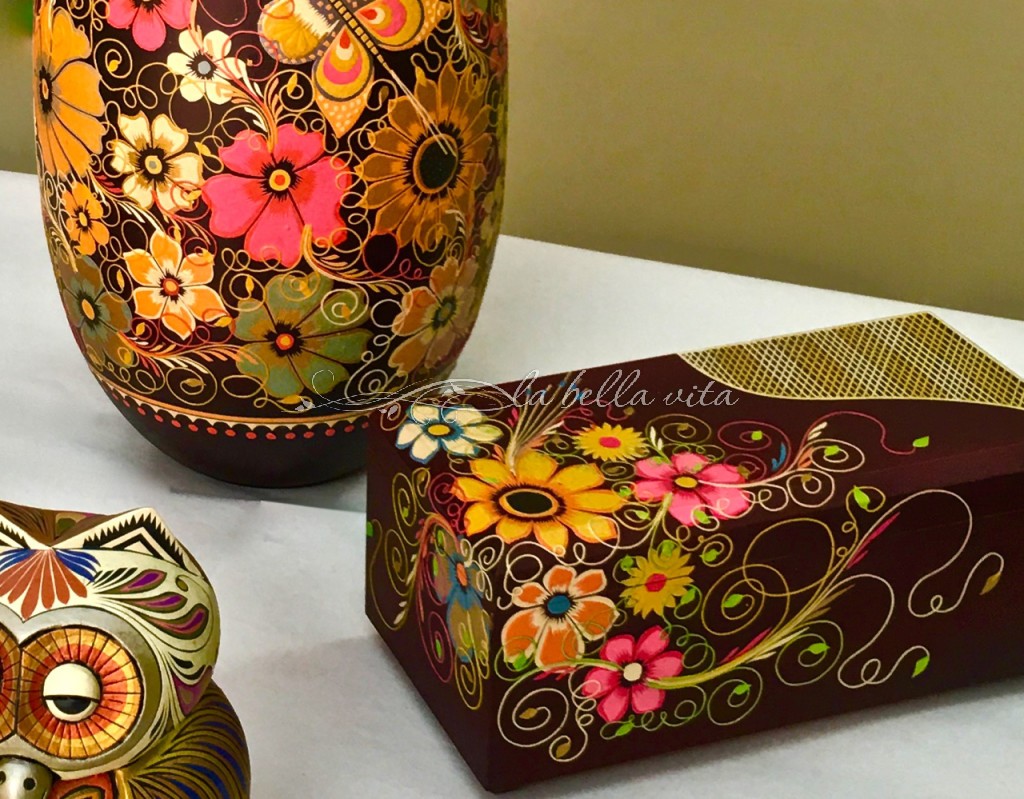
Besides cooking and gardening, I am crazed about travel.
I have been wanting to share about something special that I discovered during our trip to Aruba in March this year. There’s so much to post about in the food and gardening world at the beginning of spring, that I’ve finally found a moment to share this incredible treasure of a find in global shopping!
Imagine simply strolling along an outdoor shopping center full of ‘ho-hum’ same-old, same-old local rag shops, after enjoying Dutch pancakes and hospitality. You glance into shop windows and watch poorly dressed tourists walk by in flip-flops and skin that is burnt to a crisp, bright red! Suddenly you happen to turn and notice a most unusual shop, more different than any shop that you’ve ever seen.
Through the shop’s glass windows, you see walls covered with carved and colorful mahogany and cedar masks, shapes of horses, other animals, and various sunburst designs. On each of the tiered tables are carefully displayed jewelry boxes, decorative covered bowls and platters, tea bag boxes, coasters, and various small animals figurines of owls, horses, and more. The indigenous people believe that the masks possess good luck that chase away bad spirits. The animals also have significant meaning to the native people.
When I saw the beautiful objects on display through a store window, I noticed a poster taped to the window glass which provided a detailed description of the process on how Mopa Mopa crafts are made. After reading the information, I couldn’t believe that these crafts weren’t painted . . . with true paint. My husband was sitting on a bench and I told him to come on over and take a look at the unique objects. After looking at them for some time, he swore that the objects were all painted too. Then I told him about the poster on the window that explained the technique. He read the process, looked at the photos of the different steps and couldn’t believe it either!
We had to go into this shop!
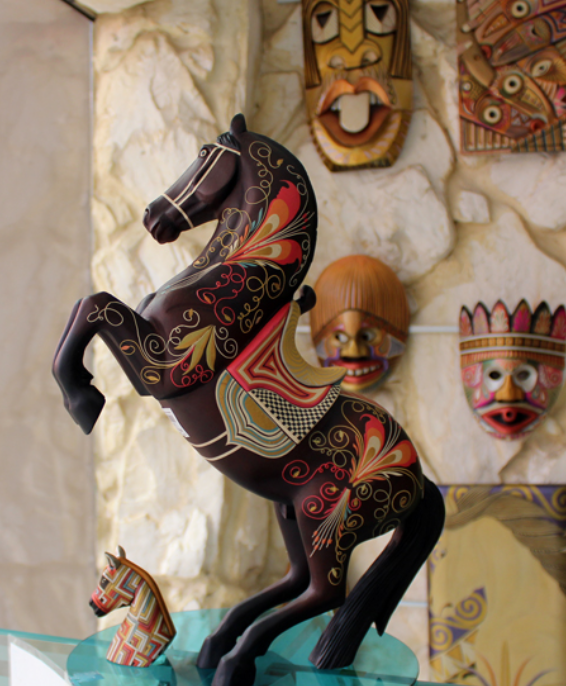
I was tempted to purchase this horse piece, but the price tag kept me from adding more $$’s to the total amount!
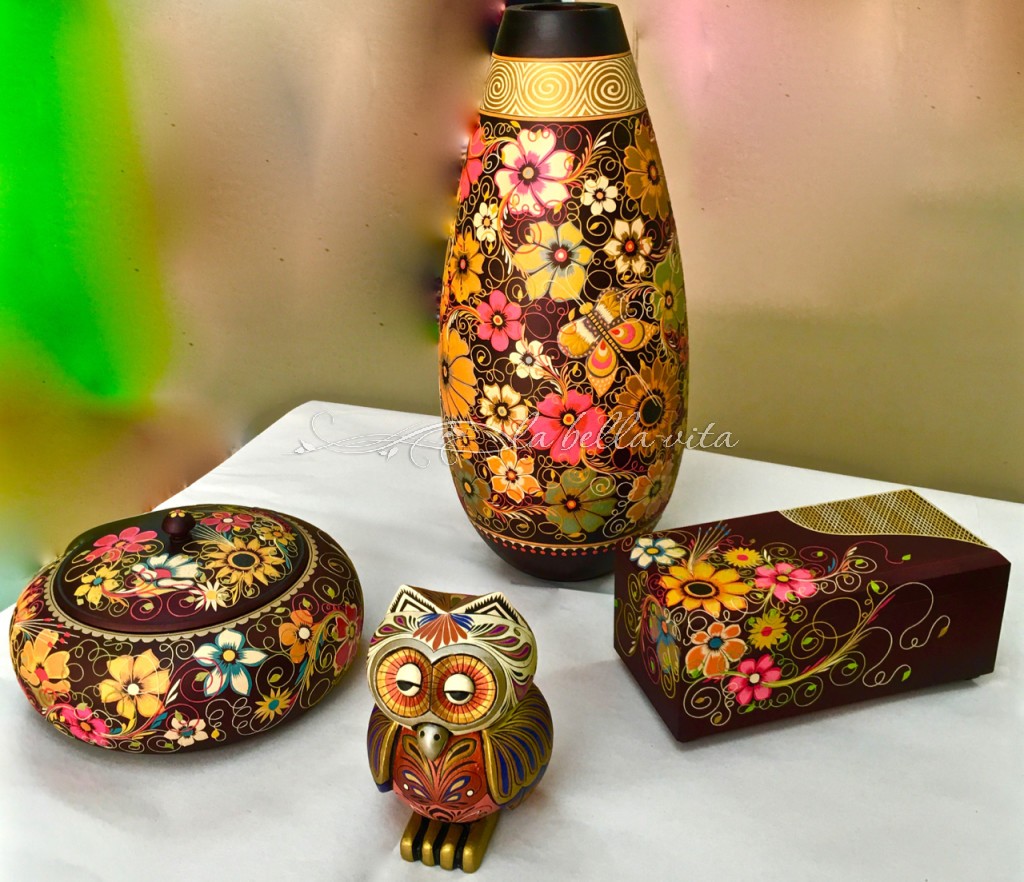
Some of the goodies that I brought back with me (above). Think about it: each one of those scrolling lines and each one of those dots is a design cut out of the material that adheres to the wood — truly, there is no painting involved!
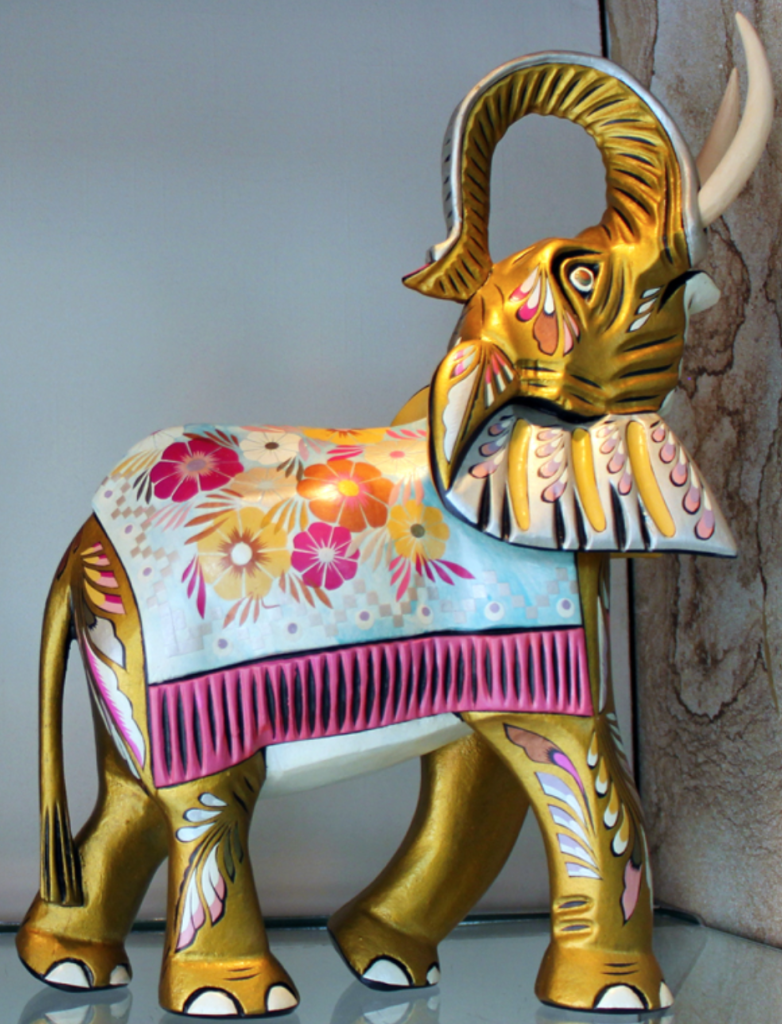
Although I’m not into elephant objects, this piece is extremely well designed. Just look at the blanket!
You could easily mistake the colors as being painted on the Mopa Mopa native wooden crafts from Aruba. It isn’t paint at all! Aruba’s most popular native art form has intricate decorative patterns made instead from layering. The ‘layers’ come from a sort of tree resin that have been stretched, formed into a film-like material, and tinted with natural dyes . . . an elaborate process dating back more than a millennium.
Every single color that you are looking at is a LAYER of this natural ‘fabric’, paper, film (whatever you want to call it) from the Mopa Mopa tree. Each butterfly or flower has about 5 – 10 LAYERS of different colors of ‘paper’ carved out by hand . . . one layer on top of another layer, on top of another layer, etc.
THIS IS NOT PAINT!
First, the leaf buds of the Mopa Mopa trees are extracted and boiled in water to first become a resin-like material similar to gum. Natural color is added from either mineral stones or vegetable dyes. Then the artisans do something very unusual: In a most unique technique, the artisans pull the gum into fragile sheets with their hands and mouths, stretching it out and chewing it to give it the right amount of shine and to obtain the right consistency.
Lastly, the colored resin is applied to the wood, sometimes into chiseled-out areas, and then designed with a knife. The excess resin is trimmed off. The process is all natural, using no chemicals or glue. Every piece of artwork is handcrafted, there are no two alike.
With permission from the shopkeeper, the next photos were actually my photos of a poster’s visual explanation of the process:
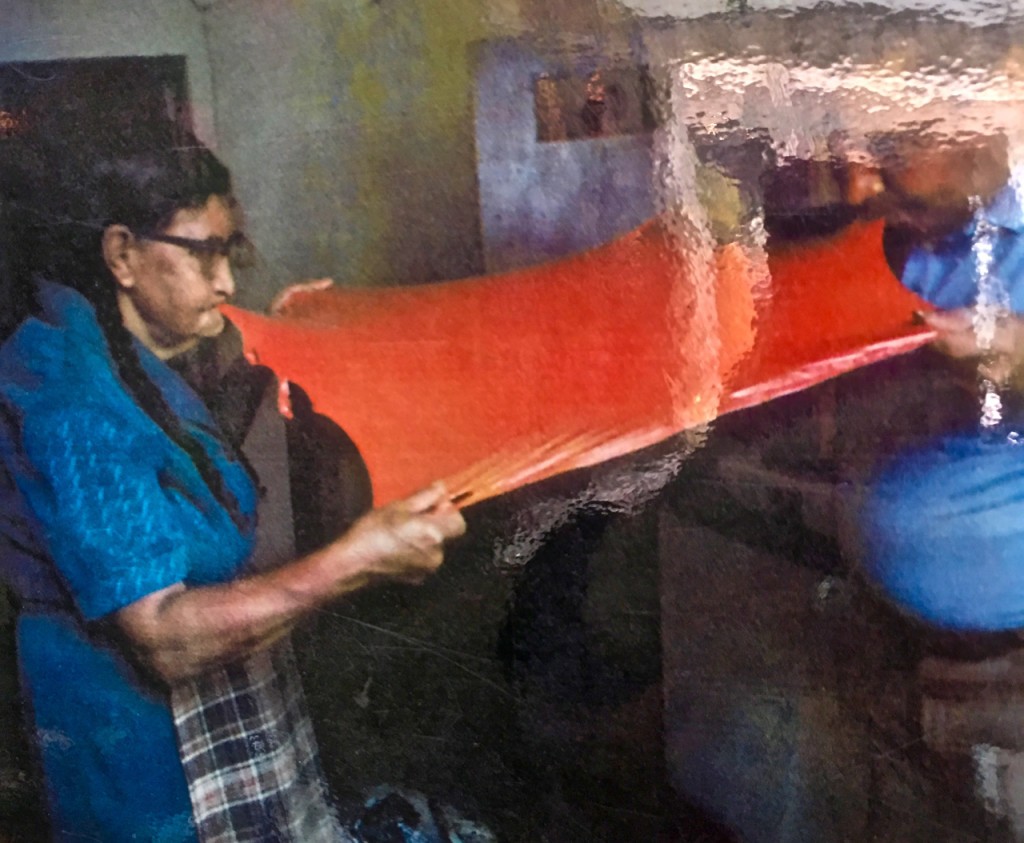
After the gummy material is formed from the mopa mopa tree seeds and dyed, it is stretched between two people’s teeth so not to tear the fragile ‘fabric’.
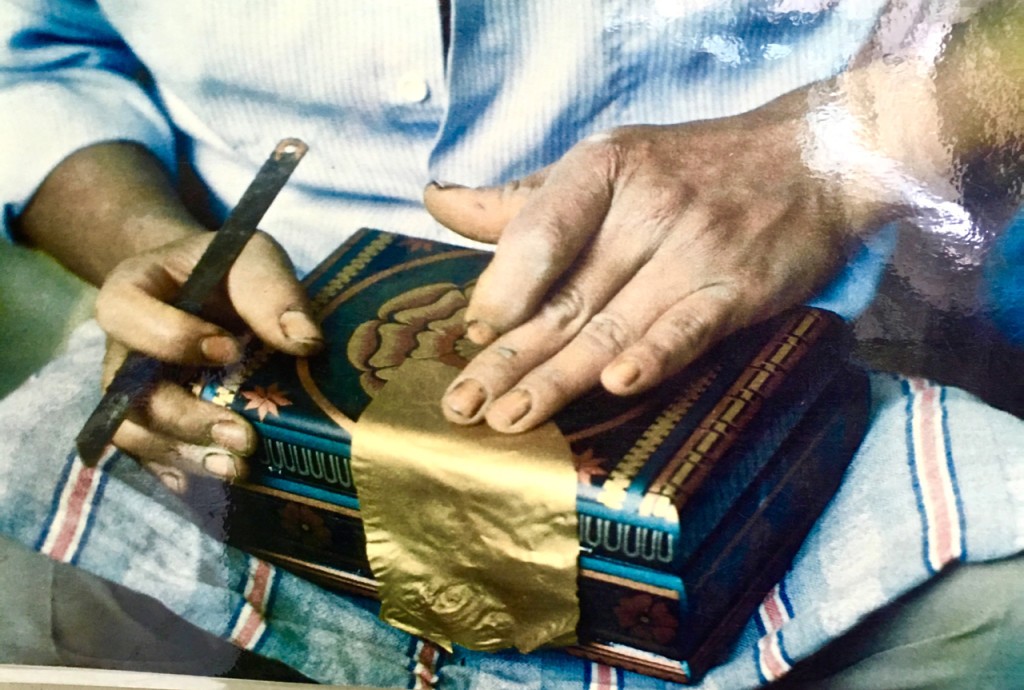
The ‘resin-fabric’ is laid onto the wooden objects in ‘layers’ on top of ‘layers’!
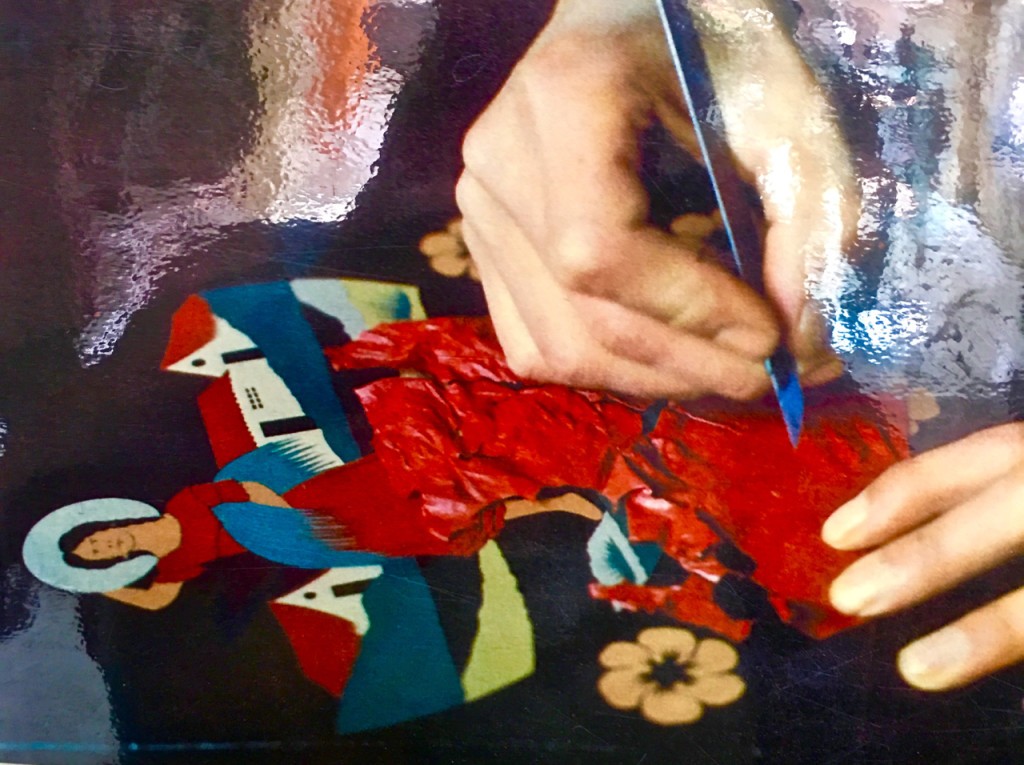
The artisans carve designs out of the resin material that sticks to the wood — no glue is used.
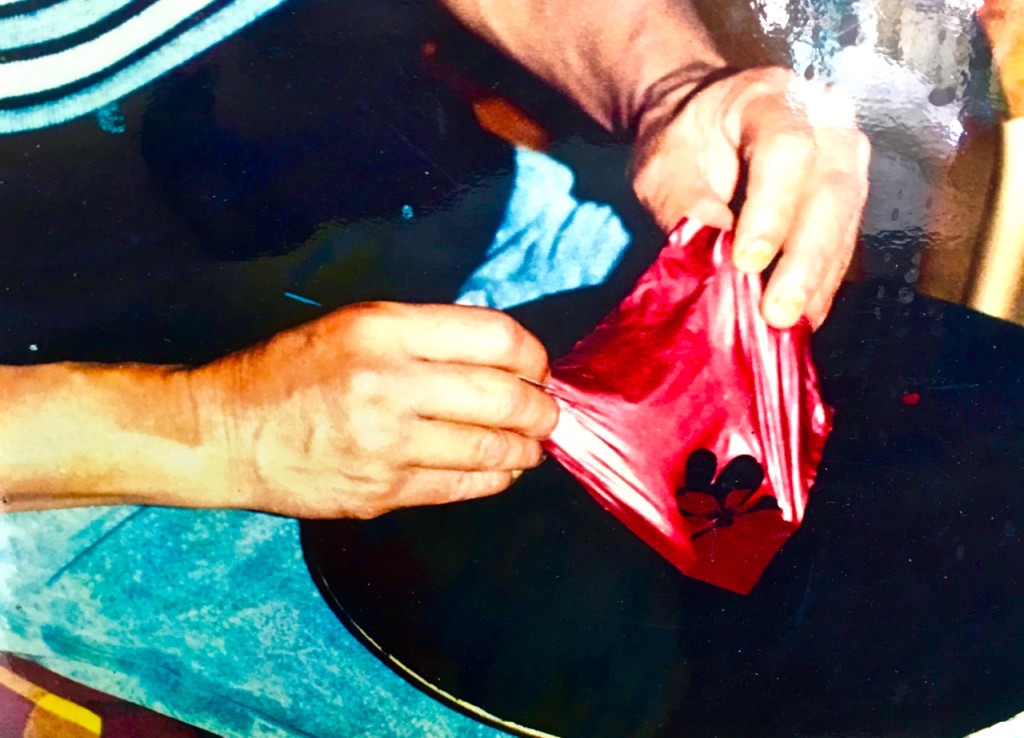
The resin outside of the designs is carefully pulled off. Another layer will go on next!
This native art form originates from the Quillacingas Indians of northern Ecuador and southern Colombia. More specifically, the name of the technique is Barniz de Pasto (Lacquer from Pasto), originating 1000-1500 yrs ago in Pasto, Nariño, South of Colombia As with all native craft traditions, the technique is handed down from generation to generation.
Because of the rarity of these native handcrafts in Aruba and the demand from tourists who collect them from around the world . . . they carry a very steep price. Customers include those seeking unique, one-of-a-kind art pieces and usually return every year to buy more pieces, often over $1000 just to purchase these unusual gifts for family and friends, especially for Christmas.
When we were in the shop, the stock was on the low side from a few cruise ships coming into port before us, but we didn’t have any problem finding items that we loved . . . all in the same pattern by the same artist.
These will go perfectly in my house in which the decor is based on corals, creams, yellows, and greens among our dark wooden plank floors.
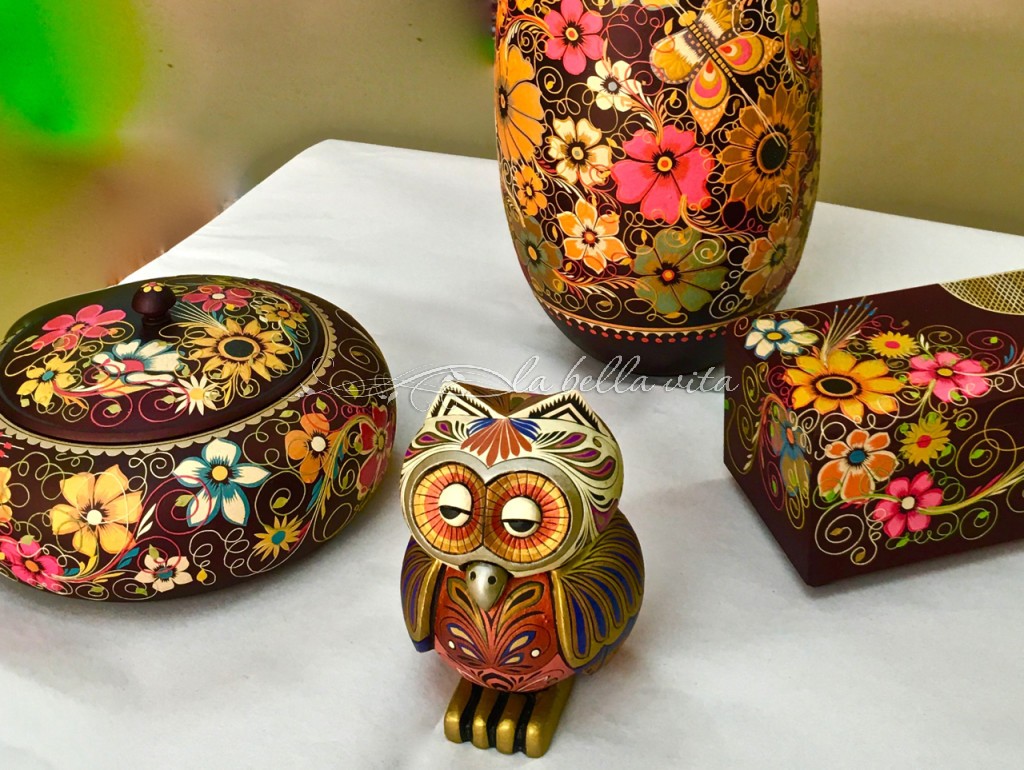
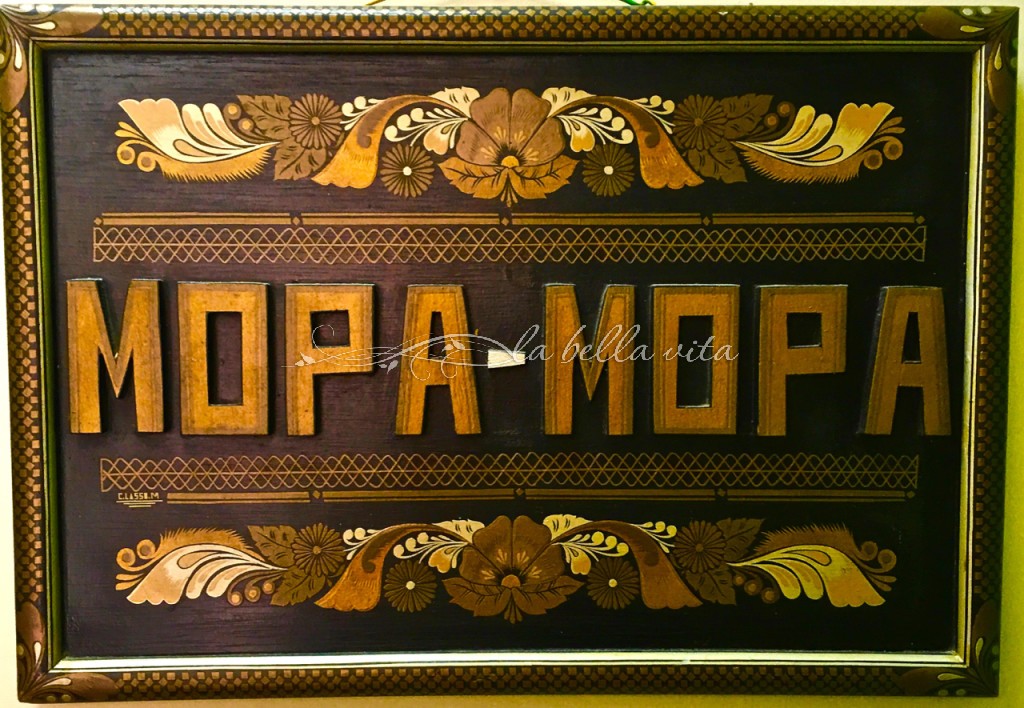
.
There is only one actual “Mopa Mopa” store in Aruba. You can find out more about it through this link => Mopa Mopa This is a group of dedicated people to preserving the beauty of this ancient art form. What you’ll find in this shop is absolutely the best. The customer service is extraordinary. The lady who helped me even called me after our return to the States to check on the delivery of our package.
The store’s web-site also gives a wonderful, detailed explanation of this ancient craft => Historical Background of Mopa Mopa
So what do you think? Are these items painted or not?
Amazing, huh?
.
.


Buenos días, cordial saludo. La técnica del mopa mopa es exclusiva y originaria de de la ciudad de Pasto Nariño Colombia. El Barniz de Pasto es una técnica ancestral que fue reconocida por la UNESCO como patrimonio inmaterial de la humanidad. Los artesanos dedicados a este arte merecen el reconocimiento por su hermosa labor. Los invitamos a que visiten la hermosa ciudad de Pasto y admiren las grandiosas obras artesanales del mopa mopa “Barniz de Pasto”
Good morning, cordial greetings. The mop mop technique is exclusive and native to the city of Pasto Nariño, Colombia. The Varnish of Pasto is an ancestral technique that was recognized by UNESCO as an intangible heritage of humanity. The artisans dedicated to this art deserve recognition for their beautiful work. We invite you to visit the beautiful city of Pasto and admire the great artisanal works of the “Barniz de Pasto” mop mop.
Dear Mr. Munoz,
Thank you for the lovely message/comment that you have left here about the technique used in these unprecedented times. I appreciate the information that you shared about the commune that produces these extraordinary items.
Hi Roz – I was trying to find more information on Mopa Mopa and I stumbled across your post. Just a note that I was in the same shop in Aruba and purchased an absolutely beautiful bull. It sits on my desk in my office. I love it. I’m going to look online for another piece!
Mark
Hi Mark,
Isn’t this art craft just amazing! I’m glad to ‘meet’ another person who really appreciates not only the beauty of Mopa Mopa, but also all that is entailed in it’s production! This is a fantastic store that sells out of items very quickly, especially around Christmastime. I’d enjoy going back!
Thanks for stopping by and letting me know your thoughts about Mopa Mopa!
Ciao,
Roz
Oh my! The colors are absolutely amazing! Beautiful pictures. Hopefully they will be able to preserve their art. The elephant is beautiful… I know of one special person that would absolutely love this piece. Thanks so much for sharing Roz!
This is so amazing! I have never heard of anything like this before. The pieces you bought are just beautiful, Roz! I really enjoyed learning about it. Thanks for sharing such an interesting aspect of your trip!